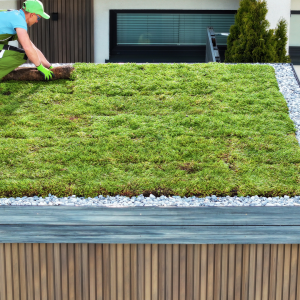The beauty of your historic home is worth preserving. Owning an older home is a privilege. Most of these homes require renovations to maintain their functionality, but you also don’t want to rid the house of its old design and architecture. It makes choosing the right roof for a historical home a challenging process. Besides, you do not want to choose a roofing system that is too heavy for the old structure to hold.
So what are the best materials for your older home? What should you do when choosing a roof for your historical home for the best roofing results? As simple as they may sound, these are tough questions that you need to think about critically. Let’s have a look at what you need to do to pick the most appropriate material for your historic home’s roof.
Look for a historic home roofing expert
You may find numerous roofing experts around your location; however, not all of them would have the expertise of working on an older home. Most of them work on modern roofing structures, and therefore may not be able to provide you with the expertise you require for your home.
Start talking to a few roofing contractors in your area like Fortress Roofing, a Calgary roofing company, and ask them about their experience working on similar projects, your roofing material, to be specific. The chances are that they have never worked on such projects and with such materials.
If the Roofing company has worked on similar projects, go ahead and look for client testimonials. You can even ask the roofing expert for photos showcasing what they made for their past clients. Choose the best contractor given what you see.
Conduct a roof inspection
A roof inspection will help determine the number of repairs required for your home’s roof. You will be able to decide whether you need minor repairs or a replacement of the whole roof.
There is a possibility that you may not need to replace the whole roof and instead fix the leakages and mold invasion. It is also essential to inspect the roofing structure to ensure it is strong enough to hold the new roof’s weight.
To avoid any further damage, let a professional roof inspector inspect with safety in mind. The inspector would know the right tools to use and the steps to follow since the old roof material is generally weak and must be handled with care.
Apply a temporary patch
Once the extent of the damage on your roof has been conducted, the roofing contractor may have to carry out extensive research on your roof. This can take quite some time before the roofing expert can develop a viable solution for your roof. The research may range from looking at the building specifications to analyzing the home plan and reviewing previous homeowners’ documents. The delay may also be a result of waiting for approval from the authorities.
During this waiting period, you can apply a temporary solution for damages such as leaks. Have a roofing expert provide a quick patch to protect the rest of your home from further damage. Ensure the roofing contractor does not patch the roof so that it would incur other damages.
You do not want the repair of your roof to take forever. You can shorten this waiting period by providing your roofing contractor with all the relevant documents about your roof. Provide documents of the building plans and any records related to your roofing maintenance and repair over the years.
Roofing materials for historical homes
Clay tile
Clay roofing materials were extensively in use during the colonial era. Clay tiles were usually flat, round, convex, or Spanish style. This is majorly in the areas influenced during the colonial times by the Spanish.
Over the years, clay tiles have evolved and have got replaced by wood shingles. It makes it challenging to find a replacement for these tiles in terms of design or color. You may consider choosing a modern roof tile design for a replacement, or you may maintain a general design on the roof.
Wood shingles
During the colonial era, wood shingles replaced clay tiles. The use of these shingles extended into the 19th century. Because of the complication of manufacturing, installation technique, and wood type as they vary considerably, finding a replacement for wood shingles requires a lot of effort and research.
As the wood deteriorates quickly, therefore, it has to be treated to make it last longer. It would be ideal to add a protective coating such as paint or linseed oil.
Slate
Slate roofs came into use back in the 1700s, and in America, they came into use in the year 1785. Until then, these used to be imported from Whales. Ever since slates are useful roofing material among homeowners as they vary in quality and durability. Even though the initial cost of slate roof material is very high, they are durable and pay off in the long run. The average life span of slate roofs is over 100 years.
Choose slate materials of a suitable color and shapes which will complement the architecture of your home. With its versatility, you can form beautiful patterns that will complement your home’s suitable antiquated design.
Metal roof
In the olden days, only lead and copper metal roofs were available to homeowners, that too at a high price. Tin metal roofs were popular among homeowners from the 18th century. Metal roofing materials came in different shapes. Some came in the form of large metal sheets, while others were made into metal shingles.
Nowadays, you can replace your metal roof with modern metal roofing materials such as aluminum metal roofs, tin roofs, and steel metal roofs. They are still popular among homeowners due to their durability and the fact that they reflect the sun. Even though they are still relatively costly, metal roofs are cheaper in the long run due to their durability.
Are you ready to choose the right roofing material for a historical home
Replacing historic homes’ roofing systems can be a complicated process, as you are of material you will need. The material used for your old roof may be outdated and no longer available for purchase in the market. Before you jump to a conclusion, do your research promptly and consult a roofing expert.
If your roofing team cannot acquire materials similar to those used previously, work on getting appropriate substitutes that will work just as well. The construction industry is versatile enough to provide you with a roofing system that looks identical to your original historic roof. Most importantly, you will get a roofing system that will restore your roof’s functionality and your home at large.





